David A. Benson, a citizen of Sacramento, California, has proposed an amendment to the California Constitution that would outlaw foreclosures. The proposal has been cleared by the Secretary of State.
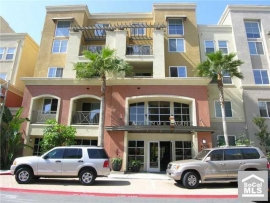
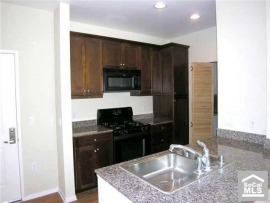
Irvine Home Address … 2372 SCHOLARSHIP Irvine, CA 92612
Resale Home Price …… $300,000

I tear my brain out endlessly,
searching for something that will never be.
No rest, never to expect something of this world,
'cause this world owes me nothing.
Submission.
What you deserve is what you will get in the end
No handouts.
Vision of Disorder — Adelaide
The culture of housing entitlement in California has reached its ultimate extreme. People have come to believe they are entitled to free money from free housing and that everyone else should pay for it. The beliefs that spawn mental manure like this proposal warrant closer examination. The cultural pathology infecting California homeowners is truly remarkable. An exorcism is badly needed — and the market itself is working to banish those demons — perhaps proposals such as this are the demon's last gasp before the kool aid drains from its veins.
This is no joke, someone has actually proposed the outlaw of foreclosures, mandated principal forgiveness, and other borrower perks and cloaked it as the birthright of all Californians. Let's carefully examine what this amendment says, and what would happen if it became law.
Foreclosure Modification Act
To the Honorable Kamala D. Harris Attorney General of the State of California
California Homeowners and I, the undersigned David A. Benson, a citizen of the State of California and located at PO Box 292452 Sacramento, CA 95829
916-247-4743
Temporary Numbers Fax 916-685-0385
e-mail: protect.our.home.now@gmail.com
Do hereby request a Title and Summary for the attached proposed initiative constitutional amendment.
JUN 07, 2011
INITIATIVE COORDINATOR ATTORNEY GENERAL'S OFFICE
This initiative measure is submitted to the people in accordance with the provisions of Section 8 of Article II of the California Constitution.
This initiative measure expressly amends the California Constitution by amending a article and by adding sections thereto of the Article 1 dealing with Declaration Of Rights.
PROPOSED AMENDMENT
FORECLOSURE MODIFICATION ACT
SECTION 1. Title
This act shall be known as the “Foreclosure Modification Act”.
SECTION 2. Findings and Declarations
The People of the State of California hereby find and declare that:
(a) Real estate lending institutions have failed to provide a simple method of loan modification and foreclosure prevention.
Loan modifications are not an entitlement and banks don’t want to make them one. Loan modifications should not become an entitlement, and foreclosures should not be prevented. Foreclosures are essential to the economic recovery. Just because someone declares something to be a problem doesn't mean that it really is.
(b) That lending institutions, loan servicers, mortgagees, trustees and beneficiaries of home loans are not taking into account the devalue that has occurred in property values and adjusted loans accordingly in loan modifications.
Lenders should not care about the value of the borrower's collateral except to the degree their collateral is protected. If lenders were forced to write down principal if values declined, how do you think lenders would react? The first thing that would happen is that down payment requirements would go sky high. If 50% declines are possible, and if lenders had to reduce principal to match, no lender would ever loan more that 50% of the value of the loan.
Of course, we could always look to the US government to continue to provide those 96.5% FHA loans and expect taxpayers to eat the losses when the inevitable write downs came. If you think the 1.15% FHA insurance premium is high now, wait until the actuaries factor in the cost of California principal reductions.
Basically, if principal reductions were mandated, all home loan lending in California would cease. No private lender wants to give away their money, and the government can't afford to.
This act should be retitled as the “Loan Owner Giveaway Act.”
(c) That borrowers would continue to make payments on notes held by these lending institutions, loan servicers, mortgagees, trustees and beneficiaries, if given the opportunity.
If the above statement were true, why do 25% of loan owners walk away through strategic default? If given the opportunity borrowers will take free money and reduced payments, and if not given that, they will simply walk away.
(d) That foreclosure has become a method of increasing a lending institution, loan servicer, mortgagee, trustee and beneficiary's bottom line and profits by turning borrowers out of their homes.
I profit from foreclosures, I do so at the expense of lenders. No lender is making money from the auction site. That is where their huge losses are finally realized. The above statement is complete nonsense. Further, so what if people are making money from foreclosure auctions. The auctions would not be occurring if borrowers continued making their loan payments.
(e) That currently it is a time consuming and sometimes costly process that is required by lending institutions, loan servicers, mortgagees, trustees and beneficiaries for refinancing
of a home loan in order that a borrower may take advantage of lower interest rates.
Lenders don't want borrowers to take advantage of lower interest rates. Lenders want to make money by charging higher interest rates. So now low interest rate refinancing is an entitlement?
I suppose the free-money cash-out refinances at ever-decreasing interest rates are an entitlement too, right?

How are the statements above identified as problems? Why don't we give everyone free houses and free money for life? That's basically what this amendment would accomplish.
SECTION 3. Purposes and Intent
The People of the State of California do hereby enact this measure to:
(a) Assist all citizens of this great State of California in the purchase and ownership of a home or property and that associated therewith.
This is not assistance of the citizens of a great state. What he is describing is theft, and it will not make our citizens great, it will make them entitled whiners.
(b) Make available principal reduction as well as but not limited to interest rate reduction a method of aiding borrowers in retaining their home or properly.
If this were to come to pass, any borrower who behaved in any prudent way is a fool. Everyone would be strongly encouraged to borrow as much money as possible against their homes, then when prices crash petition for their mandated principal forgiveness. At that point, anyone who isn't gaming the system is a fool.
(c) Prevent the lost of one's personal home property by foreclosure or other means due to hardship or illness or other calamity.
So when the calamity is self inflicted — which the vast majority in California are — the intent is to eliminate the consequences for unwise behavior and give foolish borrowers a pass. Moral hazard will be enshrined into the California constitution.
(e) Make refinance for a lower interest rate and payment simple, easy and available to all homeowners.
Who exactly is going to provide this money? Given the terms dictated by this amendment, no private lender will be stupid enough to extend these loans. Will the government do it? Or will the government be asked to provide loan guarantees and take the risk?
SECTION 4. Article 1 of the California Constitution is amended, with the addition of SEC. 31 to read:
It is a fundamental right for every Californian to purchase and own a home and real property. As such no township, city, county, municipality, corporate entity, the Legislature or agents thereof shall infringe on this given right of the State of California to its citizens. In that this right is granted to the citizens of California, the State and its agents (townships, cities, counties, legislature and departments thereof) shall endeavor to assist and encourage the ownership of a personal home or property and such as related to same.
Home ownership as a fundamental right? An entitlement? If it is, I want a beachfront home in Laguna. It's my right as a California citizen, right? All I have to do is get a loan to get through the door, then it's mine.
No citizen of the State of California shall lose or have that deemed as their personal home or property taken by foreclosure or any instrument thereof or similar to.
No citizen of the State of California will ever be given a home loan. Why would any lender fund a loan they knew they could only get back if the borrower decided to pay them back? What happens when borrowers strategically default and decide to squat forever? Fear of foreclosure is essential to the operation of our real property system. Without it, borrowers have no incentive to borrow responsibly, and lenders have every reason not to loan at all.
In the event of non payment in the time defined by standard loan contracts, due to financial hardship or illness by the home or property borrower, then the lending institution, loan servicers, mortgagees, trustees and beneficiaries shall make every effort to assist California borrowers and in the event of a reduction of local property values of more then 10%, a reduction of principal to reflect the new value shall be used, as well as to reschedule payments and or reduce interest rates and or refinance without credit review of the loan in order to bring said loan current.
There are two positions you can take in finance: equity or debt. Equity gets to participate in the upside and the downside of the change in asset value. Debt is fixed, and debt positions do not participate in either the upside or the downside. This provision gives borrowers the best of both worlds and makes lenders eat a shit sandwich.
In addition any such loan issued for and secured by a home or property by any lending institutions, loan servicers, mortgagees, trustees and beneficiaries doing business in the State of California, shall be able to be refinanced without credit review or penalty at minimum cost, within 45 days of being requested, by the original loan borrower or home owner, provided said owner or borrower has maintained said loan for a period of no less than 3 years.
This provision shifts all interest rate risk onto the lender. If rates go up, the borrower gets the advantage of their mortgage being fixed at a low rate, but if rates go down, the borrower automatically gets the benefit of the lower rate even if they no longer qualify. Again the borrower is getting the best of both sets of terms, and the lender is being forced to endure the worst.
If lenders have to face both depreciation risk and interest rate risk, they will dramatically increase down payment requirements, and interest rates will go sky high — assuming lenders are willing to lend at all. The follow-up amendment to this one is to force lenders to loan money in California because otherwise they won't under the new terms.
All borrowers shall have the right and the ability to meet in person if desired, with an agent of the lending institutions, loan servicers, mortgagees, trustees and beneficiaries in order to facilitate any required review with said agent who will be authorized to make any changes in loan terms at that time.
To top it off, lenders must absorb some unnecessary servicing fees. I get the impression the guy who wrote this amendment wanted to see how bad he could make the deal for lenders. He succeeded.
This shall apply also to property taxes, fees and levies collected on a citizen's home by any township, city, county, municipality, political subdivision or agents thereof.
There goes the last time any home owner paid their HOA dues or property taxes. Why pay when they can't foreclose? To be nice?
These groups shall make every effort possible to assist the home owner in the payment of current or back property taxes or assessments, even to the extent of allowing payments on a weekly or monthly schedule at no additional cost or interest thereof, in order that the citizen may retain their personal home or properly. This does not prohibit those laws dealing with mechanics liens and lien laws, but is in addition to same.
This amendment is foolish on many levels, but it does reveal how pervasive the housing entitlement has become in California. If I were going to write an amendment as satire, I couldn't do it as well. This encompasses every bad idea of loan owner bailouts into one tome. Kudos for the satire. Condemnation for the serious attempt at expanding homeowner entitlements.

California Citizen Proposes Amendment Outlawing Foreclosures
08/02/2011 — By: Krista Franks
A Sacramento, California citizen has proposed an amendment to the California Constitution that would outlaw foreclosures.
Declaring that “real estate lending institutions have failed to provide a simple method of loan modification and foreclosure prevention,” David A. Benson’s Foreclosure Modification Act would require lenders to provide principal reductions and interest rate reductions to help borrowers keep their homes.
Benson asserts that loan servicers are “not taking into account the devalue that has occurred in property values,” and thus, his amendment would require lenders and servicers to offer refinancing options with lower interest rates to all homeowners. According to the amendment, any home loan “shall be able to be refinanced without credit review or penalty at minimum cost, within 45 days of being requested by the original loan borrower or home owner” given the borrower has maintained the loan for at least three years.
“It is a fundamental right for every Californian to purchase and own a home and real property,” the proposed amendment states. “As such no township, city, county, municipality, corporate entity, the Legislature or agents thereof shall infringe on this given right of the State of California to its citizens.”
The proposal, already cleared by the Secretary of State, now requires 807,615 signatures — 8 percent of the total votes cast in California’s 2010 gubernatorial election — in order to be listed on the ballot for California voters to consider.
Benson has until December 27 to collect the signatures.
A nonpartisan legislative analyst and the California governor’s director of finance say the amendment might conflict with the U.S. and California Constitutions and other federal laws, according to an article in the Central Valley Business Times.
It probably won't be too difficult to find 807,615 loan owners to sign up to get free money. I wouldn't be surprised to see this initiative get on the ballot. If it passes, hopefully the judges will write a scathing rebuke when they throw it out in court.
The school of hard knocks
Whenever I see a property with an address on Scholarship, I think about how the buyers were schooled by the market. Today's featured property is a huge loss on a Jamboree corridor condo.
The original buyers put 20% down on this condo, so both they and the bank shared the pain equally. It must suck to lose $107,400 of your own money and have your credit trashed.
——————————————————————————————————————————————-
This property is not available for sale via the MLS.
Please contact Shevy Akason, #01836707
949.769.1599
sales@idealhomebrokers.com


Irvine House Address … 2372 SCHOLARSHIP Irvine, CA 92612
Resale House Price …… $300,000
Beds: 2
Baths: 2
Sq. Ft.: 1037
$289/SF
Property Type: Residential, Condominium
Style: One Level, Other
Year Built: 2006
Community: Airport Area
County: Orange
MLS#: U11000507
Source: SoCalMLS
Status: Closed
——————————————————————————
Upgraded home offers 2 master bedrooms, 2 baths located on the third floor with open views. Home includes natural granite slab countertops & designer European-style cabinetry in kitchen and bathrooms, black Whirlpool appliances, hardwood flooring in kitchen and entry, and dual glazed energy efficient windows. Separate inside laundry room includes a full size washer & dryer. Two side by side assigned parking spaces in gated covered garage. The home is desirably located near the amenities which include pool, spa, fitness center, indoor basketball court, putting green, billiard room, tot lot, club house, business center, conference room, and more.
——————————————————————————————————————————————-
Proprietary IHB commentary and analysis ![]()
The North Korea towers are not the only condo complex to see massive losses. This unit sold for more than 40% off its peak purchase price. With transaction costs, the loss was nearly half of what was paid.
Resale Home Price …… $300,000
House Purchase Price … $535,000
House Purchase Date …. 2/24/2006
Net Gain (Loss) ………. ($253,000)
Percent Change ………. -47.3%
Annual Appreciation … -10.4%
Cost of Home Ownership
————————————————-
$300,000 ………. Asking Price
$10,500 ………. 3.5% Down FHA Financing
4.53% …………… Mortgage Interest Rate
$289,500 ………. 30-Year Mortgage
$63,087 ………. Income Requirement
$1,472 ………. Monthly Mortgage Payment
$260 ………. Property Tax (@1.04%)
$0 ………. Special Taxes and Levies (Mello Roos)
$62 ………. Homeowners Insurance (@ 0.25%)
$333 ………. Private Mortgage Insurance
$390 ………. Homeowners Association Fees
============================================
$2,517 ………. Monthly Cash Outlays
-$135 ………. Tax Savings (% of Interest and Property Tax)
-$379 ………. Equity Hidden in Payment (Amortization)
$18 ………. Lost Income to Down Payment (net of taxes)
$58 ………. Maintenance and Replacement Reserves
============================================
$2,078 ………. Monthly Cost of Ownership
Cash Acquisition Demands
——————————————————————————
$3,000 ………. Furnishing and Move In @1%
$3,000 ………. Closing Costs @1%
$2,895 ………… Interest Points @1% of Loan
$10,500 ………. Down Payment
============================================
$19,395 ………. Total Cash Costs
$31,800 ………… Emergency Cash Reserves
============================================
$51,195 ………. Total Savings Needed
——————————————————————————————————————————————————-
I would like to thank the Newport Harbor Rotary Club for inviting me to speak last night. It was fun.


















.jpg)









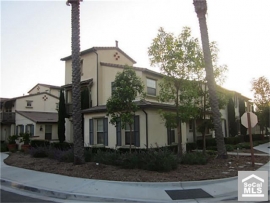
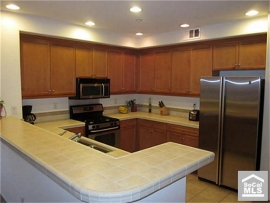



 Actually, yes, the ads do tell loan owners they should skip out on their mortgages. In Las Vegas, with many loan owners 30% to 50% underwater facing payments double a comparable rental, they should strategically default.
Actually, yes, the ads do tell loan owners they should skip out on their mortgages. In Las Vegas, with many loan owners 30% to 50% underwater facing payments double a comparable rental, they should strategically default.



 A 30% delinquency rate is astonishingly high. It is reasonable given the circumstances. If a 30% delinquency rate is maintained long enough, 90% of the housing stock will turn over as the 30% in delinquency is turned over three times.
A 30% delinquency rate is astonishingly high. It is reasonable given the circumstances. If a 30% delinquency rate is maintained long enough, 90% of the housing stock will turn over as the 30% in delinquency is turned over three times.




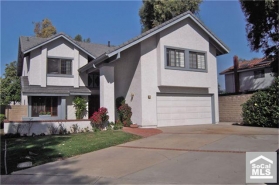
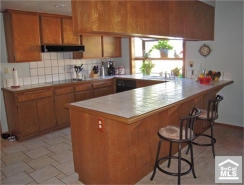











.jpg)
